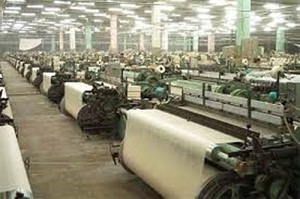Moreover, those who want to set-up new units with latest technology would have to import machineries from countries like China, Germany and other countries which is much more costlier than traditional or obsolete machineries.
 With textile machineries and equipment becoming expensive, coupled with over dependence on import, would make entry of new entrants in the segment more difficult.”
With textile machineries and equipment becoming expensive, coupled with over dependence on import, would make entry of new entrants in the segment more difficult.”
Increasing cost of machinery in textile value chain is discouraging newcomers, especially MSMEs from entering the textile sector in Gujarat. This is despite the state government’s recent initiatives to encourage investment. Right from manufacturing of yarn to weaving, processing and even garment manufacturing require sizeable investments. Moreover, those who want to set-up new units with latest technology would have to import machineries from countries like China, Germany and other countries which is much more costlier than traditional or obsolete machineries.
Devkishan Mangani, chairman of textile trade committee, South Gujarat Chamber of Commerce, says that in case of powerlooms, entrepreneurs earlier were able to start business with couple of lakh rupees by purchasing 3-4 traditional machines. However, today a single power-loom would cost up to `50 lakhs. Hence, it would be out of reach for micro and small businesses. Even medium size businessmen are feeling the pinch as setting-up a textile unit earlier used to cost around `10-12 crore, but now with the cutting-edge technology, the cost would easily cross `100 crores, adds Mangani.
In order to strengthen textile sector, Gujarat government has given plethora of sops, but mostly for existing units. The new policy, announced ahead of Vibrant Gujarat Summit, tried to address issues ranging from technology upgradation, forward-backward integration, setting up textile parks, power subsidy and others. However, the policy doesn’t have much for the new textile units.
Requesting anonymity, a senior official in the state industries department informed that even in the recently concluded summit, most of the MoUs inked in textile sector were related to expansion of existing units. Most of the MoUs were done by big textile players. Those in the MSME segment would have a real challenge to implement the project with limited financial resources, he said. Unless micro and small units wouldn’t become part of textile value chain of the state, textile industry would not generate adequate jobs, says the official.
In Gujarat, garment manufacturing is limited to handful of big players, says textile expert Chandan Chatterjee, adding, “Garment manufacturing is the driving force for entire textile value chain. Unlike Tirupur, where MSMEs are thriving in ready-made cloths, Gujarat is lacking a proper ecosystem. With textile machineries and equipment becoming expensive, coupled with over dependence on import, would make entry of new entrants in the segment more difficult.”
According to Meena Kaviya, textile committee co-chairperson of Gujarat Chamber of Commerce and Industries (GCCI), sizeable capital subsidy on machinery would be required in order to make a new unit affordable. Kaviya believes that the state government shouldn’t have imposed a cap of `30 lakh for extending assistance for the cost of machinery and equipment required for environment compliance as well as for the conservation of energy energy and water.












